
Are You 18 Or Over?
YesOr
No By clicking yes, you certify that you are over 18. By using this website, you agree to our legal disclaimer.605+ Cannabis Strains over 20 Breeders worldwide.
Table of Contents
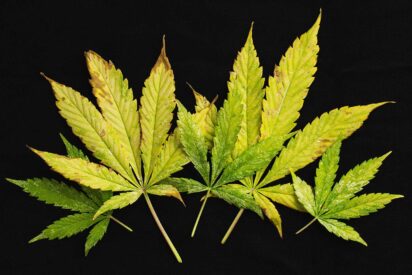
Do your cannabis plants look unwell? Do you notice some cannabis leaf symptoms and are afraid there could be something worse? Here is a list of some of the common leaf symptoms in cannabis plants and their treatments.
This is a rare deficiency that causes your plants to grow slowly and sometimes grow abnormal plant parts. Leaf symptoms are
Avoid the use of severely-filtered water. Use boron supplements or fertilizers rich in boron.
Copper deficiency can lead to poor plant growth, poor ripening of the buds and may affect the younger as well as older leaves. Cannabis leaf symptoms are:
There are also weak stems, limp leaves, immature leaf growth, and lack of buds. Treat copper deficiencies by improving pH in soil and using a fertilizer that has good copper amounts.
Calcium deficiency can lead to very poor growth; weak plant parts sand poor flower and bud growth, and development. Calcium is a very important mineral, and lack or reduced amounts in plants can lead to root problems and very weak plants that won’t survive the heat.
Other symptoms include stunted growth, crinkling and discoloration of young growths, very weak branches, hollowing or decaying stems and weak and poorly developed roots. To treat calcium deficiencies, use CAL MAG, a popular and effective treatment that can stop calcium and magnesium deficiencies. Correcting soil pH is also important since poor pH can affect the way calcium and other minerals are absorbed.
Iron is important to plants despite being a trace nutrient. When a plant lacks iron, it cannot produce its food. It cannot produce new leaves.
To treat iron deficiencies, check the pH of the soil and roots. Fix pH problems and add iron supplements or use fertilizers that have higher amounts of iron.
Manganese is needed by plants to create enzymes necessary for producing food and for growth. Manganese deficiencies are very rare, and mostly, it’s related to deficiencies in iron and zinc. The following leaf symptoms are expected:
Plants will have very slow growth. Treatment includes correcting pH problems and using iron supplements or fertilizers rich in iron.
Molybdenum is a rare element but is needed in trace amounts to support plant growth and development. Lack of molybdenum can result in:
Correct pH problems as soon as you notice molybdenum problems. Also, look for fertilizers and supplements that contain more molybdenum to replace the product you were using before.
Nitrogen is one of the essential nutrients needed for proper plant growth and development. It is the main macronutrient needed during the vegetative stage, and lack or reduced nitrogen intake can lead to poor growth, weak plants, and poor flower production. Some symptoms include:
Cure nitrogen deficiency by improving soil pH and using nutrients with high nitrogen amounts. Correct this deficiency ASAP to avoid growing and flowering problems.
In phosphorus deficiency, plants will have poor flowering performance. Your plants won’t be able to grow well and may affect your yields.
Other symptoms of phosphorus deficiency include discoloration of the stems, stunted plant growth, slower growth, poor bud development, the presence of root rot, mold, root disease, and underdeveloped seeds in female plants. Treat phosphorus deficiencies with correct fertilizers used in the flowering stage. Use organic fertilizers that contain high amounts of phosphorus. Correct root or soil pH to allow the absorption of phosphorus and other minerals.
Potassium is necessary for the flowering stage as this helps plants form large and dense buds. It’s also needed during the vegetative phase but in smaller amounts only. Potassium deficiency leaf symptoms are the following:
Lack of potassium also results in slowed or stunted growth, twisted or abnormal plant growth, curling over or under of the leaves, very tall plants or too stretchy plants, and poorly formed buds. Correct potassium deficiency by using fertilizers that are made for the flowering stage. Also, check and correct soil and root pH to promote the absorption of nutrients. Use organic fertilizers with high amounts of potassium.
Sulfur is abundant in soil, and thus, deficiencies occur in plants grown in hydro. This element can help promote plant health and overall development. Lack of sulfur will result in these leaf symptoms:
Sulfur deficiency also results in fluffy or airy buds, poor growth, and slow growth. Cure sulfur deficiencies with fertilizers and supplements high in sulfur. Correct pH ASAP to avoid complications.
Zinc is needed in the growth of new leaves, in proper plant development and the formation of large and dense buds. Zinc deficiencies go hand in hand with iron and magnesium deficiencies. The following can be seen in plants that lack zinc:
You will also notice poor growth, non-vertical growth, and other abnormalities in bud formation in plants that lack zinc. To treat zinc deficiencies, use zinc supplements. Correct iron and magnesium deficiencies as well because these affect zinc absorption.
These are yellow spots on leaves caused by the fungus Septoria cannabis and the S. neocannabina species. These opportunistic creatures attack during rain and warm weather and are common in marijuana grown outdoors.
It can be hard to treat septoria, but you can use helpful plant-bacteria such as Bacillus pumilis or Trichoderma that can remove the fungus in the soil. Prevent this from happening by prepping the soil before you grow your plants.
This is a very common fungus that can affect your plants, especially during the flowering stage. It’s hard to treat PWM, and thus, most growers harvest early to save their buds.
Harvest early, but if you can’t use homemade treatments like spraying a solution of water and liquid soap or water and baking soda plus vegetable oil. Spray these on your plants, even parts that are not affected. Use tissue paper to lift the mold from the leaves. Discard the tissue right after to prevent the spread.
It’s better to prevent PWM than treating it. Be mindful of the humidity inside your growing area. Make sure to reduce humidity and control moisture inside the room to prevent mold and mildew growth. Grow only a few plants and avoid plants touching each other inside the room.
Fusarium targets the leaves and the roots of cannabis plants. This is a type of fungus that lays dormant in tropical soil and can be activated in the right conditions. This is often spread through the use of fusarium-infested tools and running water. Signs are
Use fungicides that can kill fusarium. However, this pesky fungus is very difficult to kill and will usually persist even after you have applied fungicides. You may also apply hydrogen peroxide to the soil to clean and disinfect it. The best way to deal with fusarium is prevention.
Prevent fusarium by using clean and sterile garden tools and equipment. Use good quality soil. Never reuse soil with fusarium.
This is another fungus problem that is common in cannabis plants. This happens in improperly drained, rich soil. Signs of Verticillium wilt are:
There is no effective way to treat verticillium wilt. The only way to save your plants is through prevention. Use clean and healthy soil or grow your plants in hydro to completely prevent this condition. Use clean and sterilized garden tools and equipment.
When seedlings and seeds are attacked by fungi in the soil, the young plants may simply topple over and will soon die. This is a condition known as damping off. Symptoms include
There is nothing you can do with damping-off, but you can prevent this by growing in healthy soil.
You may also germinate seeds in peat cubes and transfer to a better growing medium like hydroponics. Use seeds with strong genetics to avoid damping off.
A small grow room or improperly monitored growing area, humidity can easily increase, and this can be fatal to your plants. This usually happens right after watering or when there are just too many plants inside the growing area. The plant leaves will exhibit the following symptoms:
Correct humidity problems right away. For a room with high humidity, improve conditions by using a fan or opening a window or door. Let clean, fresh air enter to remove moisture. Use a small fan and place on the floor to reduce moisture and prevent mold growth. Take note that molds and mildew develop in very humid environments.
If your leaves are drooping or your plants look unwell, you may suspect overwatering or underwatering. Correct these conditions right away. If the soil is too dry, water your plants ASAP.
If the soil is moist or wet and yet the plant is drooping, use a fan to dry it out. Remember to water only when the soil is dry and never when it’s moist and wet.
There may be more cannabis leaf symptoms; nevertheless, always monitor your plants and be on the lookout for any problems. Correct problems right away to prevent anything that can interrupt your plants’ growth and bud development.
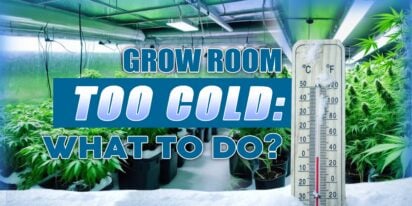
[ez-toc] In indoor gardening, maintaining an optimal temperature within your grow tent is crucial for the health and productivity of your plant

[ez-toc] Welcome to the delightful world of cannafudge crafting, where sweetness meets sophistication, and cannabis infusion adds a unique twis
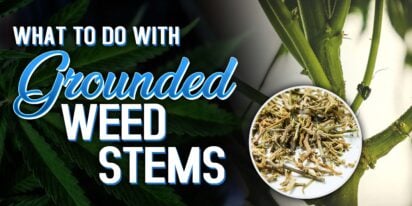
[ez-toc] You’ve finished trimming your weed, but what about those leftover stems? Don’t throw them away! These seemingly useless bits can a

Feeling high can be an exhilarating experience, but it's essential to make the most of it by engaging in activities that enhance the sensation a
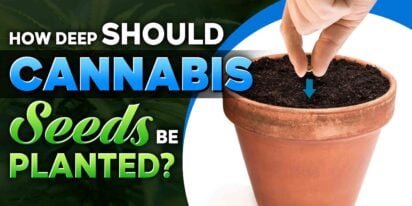
[ez-toc] Starting with planting cannabis seeds might seem simple, but how deep should cannabis seeds be planted for them to grow well. In this
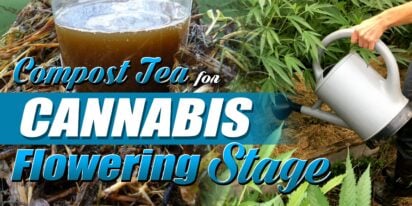
[ez-toc] In the realm of cultivating cannabis, maximizing growth during the flowering stage is a top priority for growers. While various method
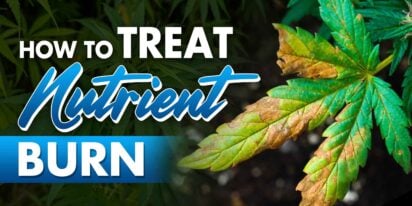
[ez-toc] Nutrient burn is a common issue among plant enthusiasts, often resulting from over-fertilization or improper nutrient application. It
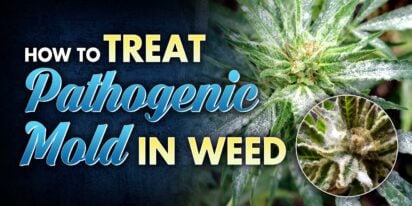
[ez-toc] Welcome to our complete guide to dealing with harmful pathogenic mold in cannabis. For those who grow cannabis, preventing mold is vit

In recent years, there has been speculation about “did Shakespeare smoke weed?” This idea originates from a study by South African anthropol
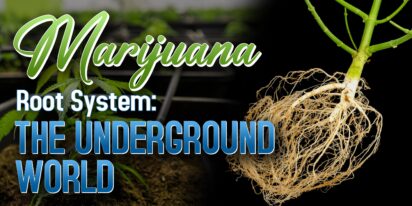
[ez-toc] Welcome to the hidden world beneath the soil – the inside of the marijuana root system. While the vibrant leaves and resinous flower

Are You 18 Or Over?
YesOr
No By clicking yes, you certify that you are over 18. By using this website, you agree to our legal disclaimer.